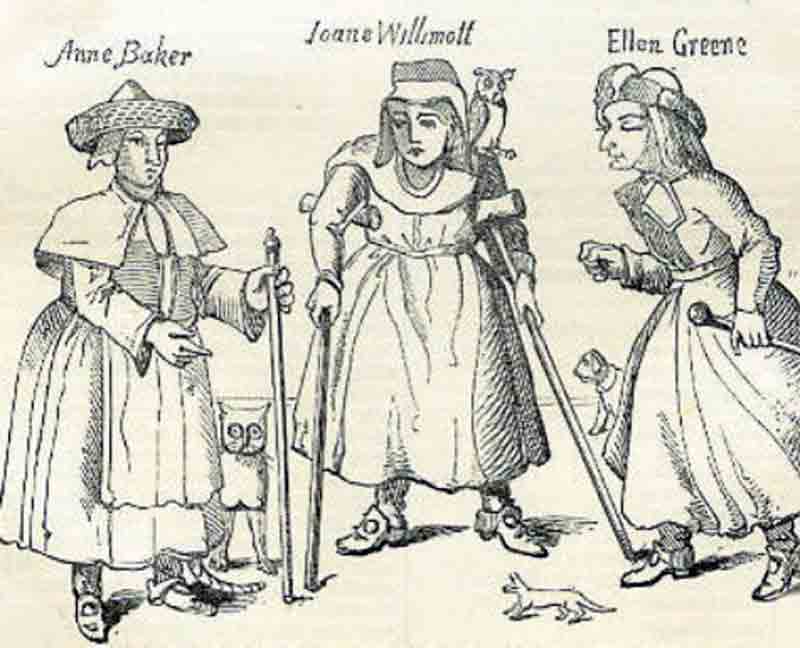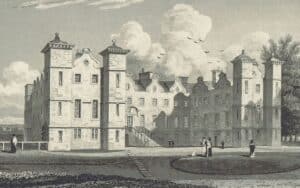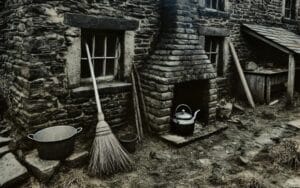Guest writer NIXIE VALE uncovers the little known story of the Belvoir Witches, women executed for witchcraft in 17th Century Lincolnshire, England

While doing some research for another project I ran across a small article about the” “Witches of Belvoir”, and after a little more research on the topic, I started to notice that I recognised the names of places in my local area.
The Belvoir Witches: What you need to know
- Who was accused: Joan Flowers and her two daughters Philippa and Margaret.
- Where did it take place: Belvoir Castle, Grantham, Lincolnshire, Lincoln Jail, Bottesford.
- When did it occur: Between 1617 and 1619 – the dates vary from source to source.
- What were they accused of: a) the death of Henry Manners. b) the death of young Francis Manners. c) the illness and attempted murder of the 6th Earl and Countess of Rutland and their daughter Lady Katherine. d) the infertility or inability for the Earl and Countess to have more children.
- Who are the accusers: The 6th Earl of Rutland, Francis Manners and the Countess of Rutland Cecily Manners (some sources say that her name is Cecelia).
The Background Story of the Witches of Belvoir
In the 17th Century accusations of witchcraft were commonplace and sometimes looking at someone in the wrong way could see you being accused of practicing Witchcraft. Sadly many of those accused would be tortured into a confession, and ultimately sentenced to death, whether or not they were guilty.
The case of the Witches of Belvoir mirrors many from that time, they were accused, and in the end were sent to the gallows.
Joan, Margaret and Philippa Flowers from Bottesford in Lincolnshire were the women at the heart of this story and these women were not well liked in their community.
The Flowers family was not a popular family among the residents of Bottesford.
Joan Flowers was said to be “a malicious, monstrous and unkempt woman” by one of her neighbours.
It was also said that she communed with Familiar Spirits and revelled in the fear and terror that her curses and hexes instilled in the people around her.
The Flowers family were known to be Herbal Healers and due to a lack of business they were forced to find employment elsewhere in order to afford a living.
The 6th Earl and Countess of Rutland were expecting a visit from King James I and required extra servants to ready the castle for the visit; the Flowers Women were employed at Belvoir Castle, Grantham, Lincolnshire as servants for the Earl and his wife.
During their time at Belvoir Castle, the women were accused of all manner of things such as theft, and due to the lack of popularity at the Castle it didn’t take long for trouble to find them.
The Dismissal of Margaret Flowers
One day Margaret Flowers was caught stealing food and other items belonging to the Earl and his family. She was caught by the Countess, who dismissed Margaret on the spot, with the dismissals of her mother Joan and her sister Philippa followed soon after.
The Countess gave them a paltry amount of pay for their services.
Illness Strikes the Castle
Soon after the Flowers Women were dismissed both the Earl and his wife became very sick, and the story says they were “subjected to horrific convulsions” and it seems that the pair were lucky to have survived.
The Earl and Countess’ eldest son Henry was suddenly stricken by a mysterious illness, which sadly ended up claiming his life.
The couples youngest son Francis was tortured by an illness no could explain, and like his older brother, he too ended up passing away.
Their sister Lady Katherine fared a little better, she still felt ill, but she was lucky to have survived along with her parents.
The revenge of the Witches of Belvoir was still not complete, they still had plans for the 6th Earl and the Countess.
While in partnership with the Devil, the Flowers women had another snare ready and waiting; they ensured that the couple could not have anymore children.
The Accusation
Along with many others at Belvoir Castle and in the town of Bottesford, Cecily, the Countess of Rutland grew progressively more suspicious of the Flowers women. She was reluctant to believe that they were witches but soon her mind would be changed.
After finding out they could no longer have children they were convinced that Joan Flowers and her daughters were to blame. The three were arrested during the Christmas period of 1618; they were arrested and taken to the jail in Lincoln to be examined and questions for signs of Witchcraft.
The Examination and Confession
The story goes that Joan Flowers refused point blank to confess, instead she made a request to be brought some bread and butter in an effort to prove that she was innocent.
Before she took a bite, she told her examiners that she wished to choke if she was guilty, and if she was innocent she wished to eat freely. It’s said that the first bite she took was also her last as she died after that bite.
However, her daughters confessed to the charges of entering into communion with a familiar.
Historically a “familiar” is said to be a spirit or a demon in the form of an animal – and these familiars helped with their schemes.
The sisters explained that their mother had a familiar, a cat named Rutterkin. They also admitted to having visions of the devil and demons. They also confessed that they had been visited by their own familiar spirits, who would suckle from their bodies.
The most damning confession came when they admitted they had stolen a glove belonging to the young Lord Ross. They explained how they gave the glove to their mother and she boiled the glove in water, stroked it across her familiar’s back and then pricked it. This along with incantations had caused the boy to become deathly sick, resulting in his eventual death. The two also admitted to the attempt on Lady Katherine’s life, but she was able to survive. They also admitted to a curse that the Earl and his Countess were not able to have anymore children.
The Trial
Their confessions were damning evidence when it came to the trial, they were tried before Sir Henry Hobart and Sir Henry Burnely, the judges of the assizes.
During their trial examination the sisters pointed their finger at three other women, revealing that these women ha helped them. The other women were: Anne Baker of Bottesford, Joan Willmot and Ellen Greene from Stathorne.
Subsequently these women were taken for examination where they revealed they also had visions much like Margaret and Philippa Flowers. One of the women explained how her familiar came to her in the form of a fairy, and how it changed into the forma of a woman that asked for her to give up her soul. The woman accused said she only communed with her familiar to enquire about the health of the people who came to her for healing.
The End of the Tale
The case of the Belvoir Witches resulted in Joan Flowers dying during examination by choking to death, which by her own words proved her guilt.
Margaret and Philippa Flowers were found guilty of using witchcraft to do harm to the Earl of Rutland’s family, with the desire to cause their death.
They were both sentenced to hang by the neck until dead on 11 March 1618 (or 1619 as the records vary).
Conclusion
The perception of witches and the mood towards them had changed drastically since the 15th Century.
Witches went from wise women, midwives and healers to a weak willed creature that made pacts with the Devil, becoming a force for evil in the world.
Witches were accused of poisoning people and livestock, causing famine and accused of going as far as killing someone.
Between 1400 and 1700 over 200,000 people were accused, tortured and put to death, and the Belvoir Witches were among the number that were executed in England.
To be accused of witchcraft, meant your life was over and death awaited. Very few people were found to be innocent, and even fewer were acquitted.
The story of the Witches of Belvoir is typical of the witch hunts of the time; they involved local squabbles within a community.
Someone would accuse another of witchcraft, it was a way of getting revenge on someone, or to get rid of a neighbour that was not liked.
Much like the case of the Belvoir Witches there was very little in the way of evidence to support the accusations.
Often the accused were coerced or tortured into making a confession which often led them to the gallows.






